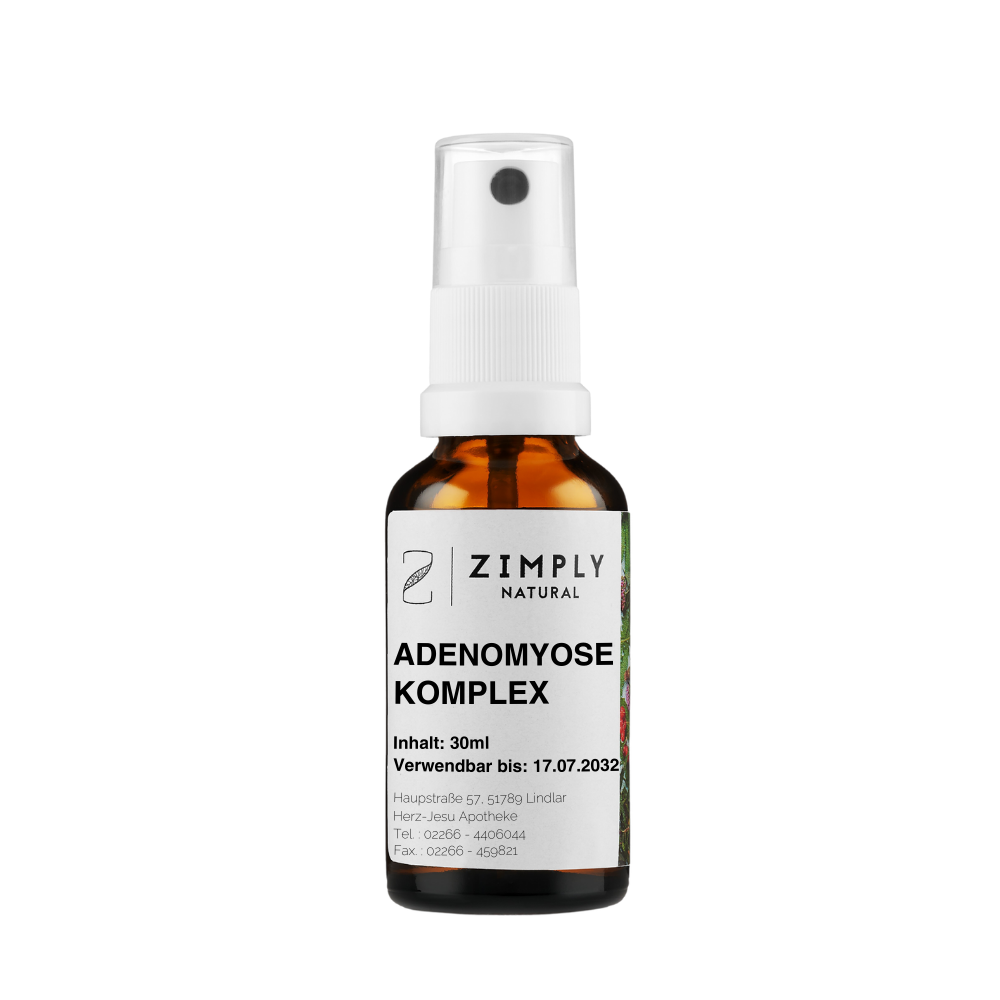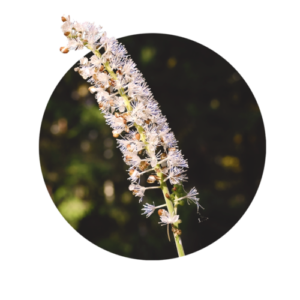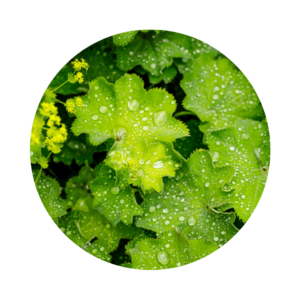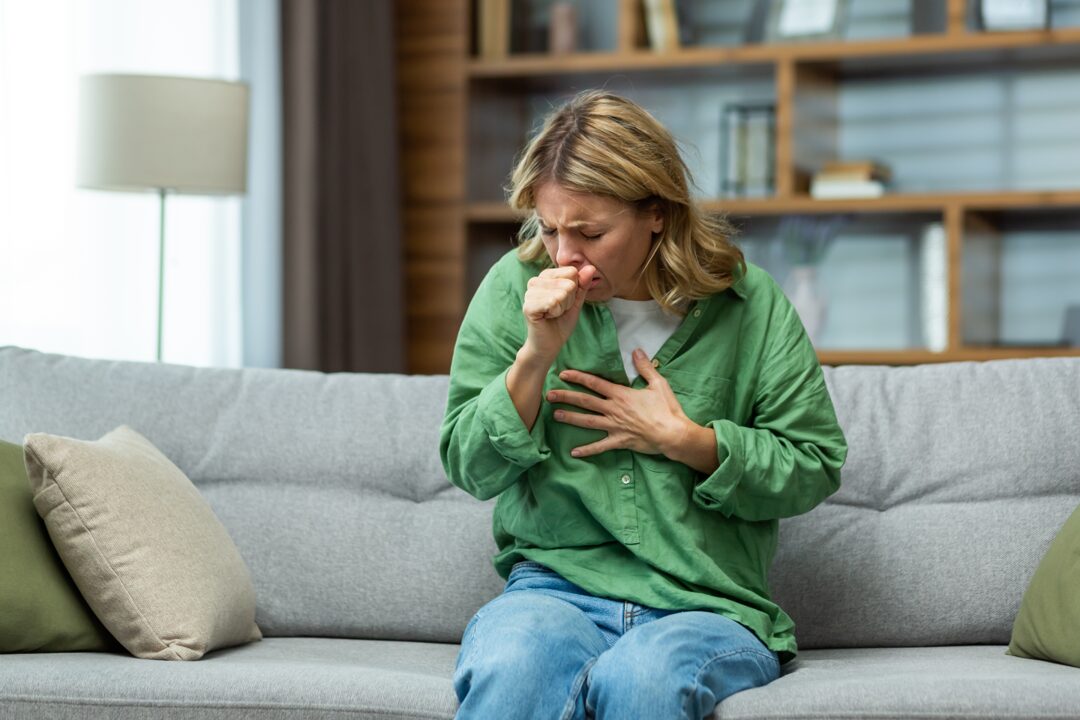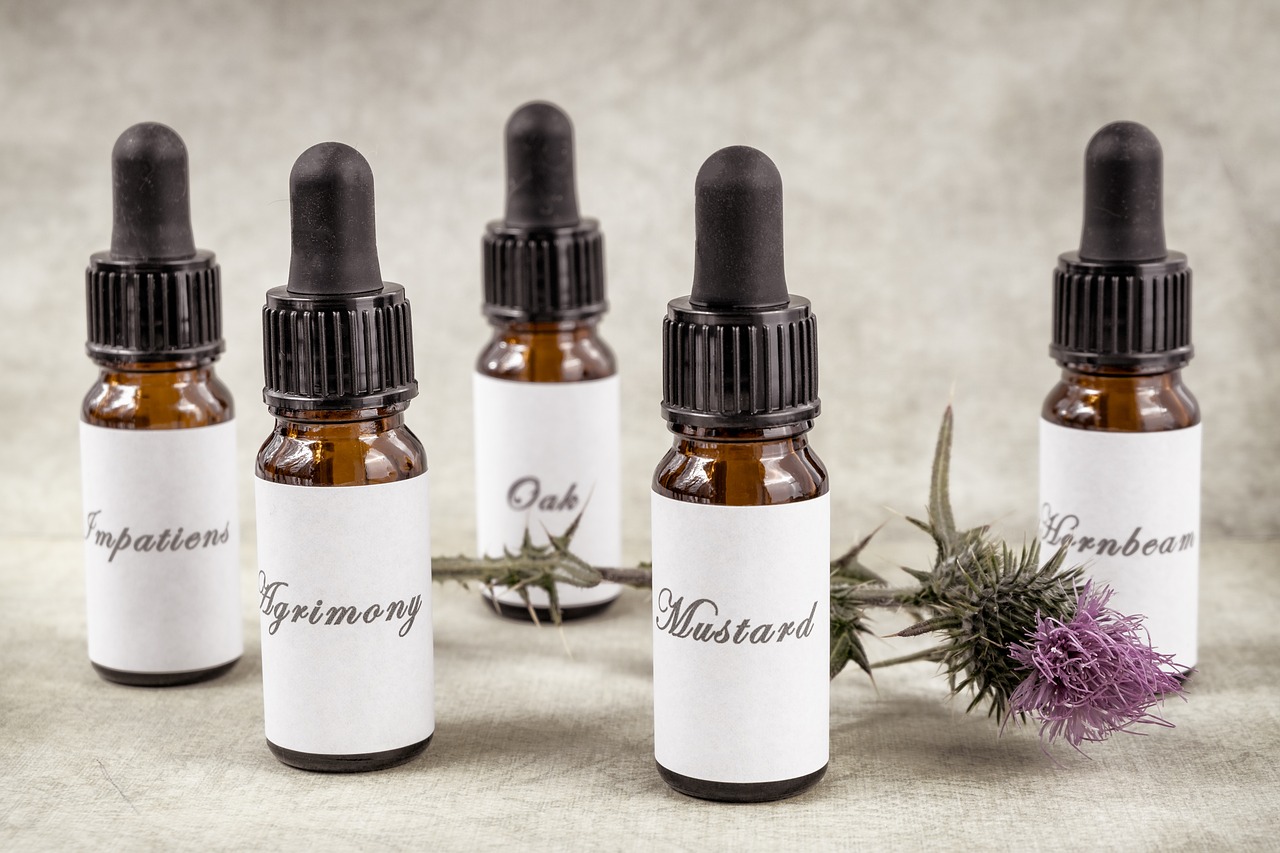Adenomyosis - a subtype of endometriosis and just as painful. The disease in which your uterine walls thicken, making your periods all the more painful. But what is the difference to endometriosis and what are possible risk factors for the disease? And what home remedies can you use if you don't want to take painkillers straight away? You can find out this and much more in this blog post. So have fun reading!
With natural methods, such as the individual spagyric mixtures from Zimply Natural, your complaints can be relieved naturally and sustainably.
Table of contents
- What is adenomyosis?
- These are the causes of adenomyosis
- Lower abdominal pain and menstrual cramps - how adenomyosis affects you
- How adenomyosis is diagnosed
- These natural home remedies can alleviate your adenomyosis symptoms
- Emotional and psychological effects of adenomyosis
- Adenomyosis and endometriosis - what is the difference?
- These medicinal plants can alleviate your adenomyosis
- Zimply Natural - Your natural aid for adenomyosis
- FAQ: Questions and answers about adenomyosis
What is adenomyosis?
Adenomyosis is a rather unknown, but by no means rare disease. In this condition, the tissue that normally forms the inner layer of your uterus spreads into the muscle layer of the uterine wall. This spread causes the uterine walls to thicken and enlarge. This can lead to particularly heavy and painful bleeding, especially during your period, as the thickening causes irritation. The symptoms are usually similar to those of other gynecological conditions, such as Endometriosis, PMS or uterine fibroids, which can make diagnosis more difficult. Adenomyosis usually occurs in middle-aged women, with risk factors including surgical interventions such as a caesarean section. Although the exact causes are not yet fully understood, hormonal factors play an important role in the development of this disease. Below we present some home remedies and approaches for the relief of adenomyosis. We also explain the difference to endometriosis, because - let's be honest - the two terms sound confusingly similar.
That the lining of the uterus (endometrium) is one of the fastest regenerating types of tissue in the human body? Every month during your period, it sheds completely and forms anew.
These are the causes of adenomyosis
Unfortunately, the exact causes of adenomyosis are not yet fully understood. Nevertheless, there are some characteristics and observed patterns, which are followed by a few theories. The main theory is that the immune system plays a crucial role, as a disruption can promote the growth of the cells that cause it. For example, the endometrial cells - the cells that line the inside of your uterus - could implant in the muscle layer of the uterus. This process can then be influenced by hormonal factors, particularly oestrogen. There is also evidence that adenomyosis can be caused by uterine operations such as caesarean sections or other surgical procedures. The reason for this may be that such operations disrupt the natural barrier between the endometrium and myometrium. Hereditary factors probably also play a role, as adenomyosis or endometriosis occur more frequently in some families.
Lower abdominal pain and menstrual cramps - how adenomyosis affects you
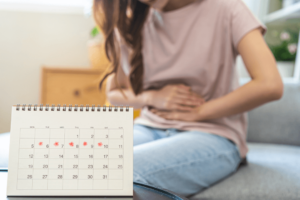
Everyone experiences pain during their period - some more, some less. For some, however, they are very extreme and cause severe restrictions in everyday life. While for some, such discomfort occurs naturally and without cause, others suffer from diseases such as adenomyosis or endometriosis. During your period, the endometrium thickens and is then shed. In the case of adenomyosis, the endometrium is ingrown in some places. This can lead to inflammation, severe cramps and an increase in blood volume in the affected areas. A common feature of endometriosis is that the pain occurs not only during the period, but also during everyday activities. These complaints can be chronic, pulling pains in the lower abdomen that can occur during physical activity, sexual intercourse or other physical activities. This pain and often heavy bleeding can be so distressing that it can significantly affect your daily activities and quality of life.
That successful womb transplants have been performed in recent years? Women who were born without a uterus or whose uterus was removed have been able to become pregnant and carry children to term.
How adenomyosis is diagnosed
First, doctors will have a conversation with you in which you describe your symptoms. Then you will usually be asked about your medical history to rule out other causes of your symptoms. Specialized imaging techniques are then used to obtain detailed images of your uterus. The most commonly performed test is the transvaginal ultrasound. This is very effective as the transducer is positioned close to the uterus and therefore produces an accurate image. If this ultrasound reveals signs of adenomyosis, an MRI scan can be ordered. The signs may include, for example, a thickening of the uterine wall or an uneven texture of the myometrium. An MRI can then help to accurately visualize the soft tissue and distinguish adenomyosis from fibroids, for example. In rare cases, if the imaging is inconclusive and the symptoms are very severe, a laparoscopy can also be performed. This allows a direct view of the uterus and the surrounding organs.
These natural home remedies can alleviate your adenomyosis symptoms
If you don't want to reach for a painkiller straight away when you have stomach pain, the following list is just right for you. Here are some home remedies that you can try. Herbal teas are our first tip, especially those made from camomile and ginger. With their calming and antispasmodic properties, they offer you relief from adenomyosis. Magnesium for muscle relaxation and vitamin B to support pain management can also be helpful. Special herbs such as vitex, which regulates hormonal balance, and turmeric with its anti-inflammatory effects can also help. Milk Thistle is another plant that can have a positive effect as it helps the liver to break down oestrogen. In terms of diet, avoiding dairy products and red meat and increasing your intake of flax and chia seeds can be beneficial. Castor oil (castor oil) and aromatherapy with essential oils can also have a calming effect. The scents of lavender and rosemary are particularly recommended.

The application of your Adenomyosis sprays is, by the way, very simple: The spray is simply sprayed into the mouth according to the dosage instructions given on the vial. In order to achieve the best possible effect and to be able to optimally counteract the causes, we recommend use over a longer period of six to eight weeks. As a kind of cure, you spray 3×3 sprays daily.
Emotional and psychological effects of adenomyosis
Now that we have covered the physical symptoms of adenomyosis in great detail, let's move on to the emotional effects of the condition. As with any other disease, your psyche can suffer greatly, especially because adenomyosis is associated with severe pain. This can quickly lead to a downward mental spiral, which can also result in feelings of Fear and depression. If you suffer from severe menstrual pain, you probably don't feel like socializing either. In the long term, this can lead to social isolation. Worries about the effectiveness of treatment and fears about fertility can also create a lot of psychological pressure. At times like these, you need to know and realize that you are not alone. Other women also suffer from conditions such as adenomyosis and endometriosis. You should take your pain and feelings seriously and see a doctor to get a diagnosis and help.

Adenomyosis and endometriosis - what is the difference?
Adenomyosis and endometriosis are both gynecological conditions that can cause similar symptoms such as severe menstrual pain and irregular bleeding. The former is often described as a subcategory of endometriosis. However, there is a crucial difference between them. In adenomyosis, tissue that resembles the lining of the uterus itself grows into the uterine wall. This leads to thickening of the uterine wall, which in turn causes heavier and more painful menstruation. In endometriosis, tissue similar to the uterine lining grows outside the uterus. This can then affect the ovaries, fallopian tubes, intestines or pelvic area, for example. This tissue reacts to hormones in the same way as the tissue inside the uterus and can lead to inflammation, scarring and adhesive bands. So while adenomyosis is associated with thickening and enlargement of the uterus, endometriosis involves scarring and adhesions. The treatment methods for the clinical pictures usually differ and should be discussed with your doctor.
That adenomyosis affects the muscle layer of the uterus? Endometriosis involves tissue similar to the lining of the uterus outside the uterus.
These medicinal plants can alleviate your adenomyosis
Black cohosh is a phytohormone donor. This results in an oestrogen-like effect that supplies the body with the important hormone. Oestrogen plays an important role in the body and is usually out of joint in adenomyosis. It can also Bugweed help with symptoms such as heavy or light bleeding, prolonged or shortened menstrual cycles, hot flushes and sweating.
The Lady's mantle is the jack-of-all-trades among gynecological medicinal plants. It protects the mucous membranes and supports the ovaries in the production of important hormones. It also has a relaxing and revitalizing effect on the abdomen. In the case of PMS, it can promote the production of hormones and relax the abdomen. In this way, the discomfort and the PMS blues can disappear.
The Monk's pepper has a long tradition as a medicinal plant for women's issues. It is used in areas such as acne, menstrual cramps, PMS, menopausal symptoms, breast sensitivity and the desire to have children. Monk's pepper is progesteronizing and thus ensures that hormone levels are balanced.
The Damascena Rose is the plant for women. It stands for primal femininity and integrates the theme of femininity into consciousness. It cares for mucous membranes, heals wounds and is relaxing. Its soothing and nurturing power is used for physical issues such as the skin and external beauty. It heals injuries and helps to integrate the traces of the past into the new self-image.
In general Cardiospermum is often used for non-infectious inflammations. Its anti-inflammatory effect is used to achieve relief and alleviation. It is usually a component of mixtures that have a similar effect. This cortisone-like effect makes it very popular for the treatment of rheumatic diseases and skin inflammations.
Zimply Natural - Your natural aid for adenomyosis
With Zimply Natural, we are the antidote to painkillers, sleeping pills, and standard medications. We are your medicine! For our mixtures we use the centuries-old natural healing method of spagyric back. The Spagyric combines the herbal active ingredients and phytotherapeutic elements of the HealingplantsThe mineral salt qualities, as well as the subtle information of the medicinal plants and the energetic potential of the Bach flowers.
With natural methods, such as the individual spagyric mixtures from Zimply Natural, your complaints can be relieved naturally and sustainably.
With natural methods, such as the individual spagyric mixtures from Zimply Natural, your complaints can be relieved naturally and sustainably.
FAQ: Questions and answers about adenomyosis
When should you see a doctor if you suspect adenomyosis?
Of course, you should always see a doctor if you notice anything unusual. However, when it comes to periods, many women are unsure when they should go to the doctor. Warning signs would be if you feel that your bleeding is unusually heavy and you are suffering from prolonged pelvic pain. In addition, pain during intercourse or feelings of fullness or heaviness in the lower abdomen are not normal and should be investigated. Another point to be aware of is the occurrence of increased blood clots during your period. Pain in the weeks before and after your period can also be a sign of adenomyosis.
Pregnancy with adenomyosis - is it possible?
Yes, it is possible to get pregnant with adenomyosis, but the condition can affect fertility. Adenomyosis can lead to an altered uterine structure, which can make it difficult for the embryo to be conceived. However, adenomyosis is not a definite obstacle to getting pregnant, especially with medical support and treatment. However, women with adenomyosis sometimes have a higher risk of complications such as miscarriage, premature labor and problems with the placenta.
What are the possible complications of untreated adenomyosis?
Possible complications of untreated adenomyosis can include chronic pain, heavy and prolonged menstrual bleeding and anemia. You may also suffer from persistent pelvic pain, which can significantly affect your quality of life. Fertility problems can also occur in the long term, including difficulties getting pregnant and risks during pregnancy.
Can endometriosis and adenomyosis occur at the same time?
Yes, endometriosis and adenomyosis can occur at the same time. Although both conditions affect the endometrium, they differ in their effects and localization. Endometriosis refers to the presence of endometrium outside the uterus. Adenomyosis is characterized by the invasion of the endometrium into the muscular layer of the uterus. If both conditions occur at the same time, this can make diagnosis and treatment more complex and require specific medical care.



